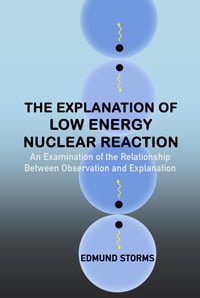A new replication attempt of the Andrea Rossi E-Cat technology has been announced by Jack Cole on http://www.lenr-coldfusion.com/2015/01/13/hot-cat-replication-attempt/.
The Universal LENR Reactor was designed by Dale Basgall and Jack Cole and they have been posting updates since September 2012.
Nikita Alexandrov, President, Permanetix Corporation has contacted the lab and generated these details about the experiment.
 Photo: Reaction chamber in operation. Note that the true light color was orange. Courtesy Jack Cole.
Photo: Reaction chamber in operation. Note that the true light color was orange. Courtesy Jack Cole.
Q&A with Jack Cole and Nikita Alexandrov
Q A replication of the Rossi type Ni-H LENR system was posted to your website. Were you the one who performed this experiment or was it someone else?
A Yes, I was the one who performed the experiment.
Q Can you go into detail regarding the nickel powder ie: grain size, composition, purity, source, batch number, etc?
A INCO Type 255 Nickel Powder (2.2 to 2.8 um particle size). Purchased on Ebay. I also use Fe2O3 added to the nickel.
Q Can you explain which type thermocouple/DAQ system you were using?
A I’m using a type K thermocouple of the type frequently used in kilns. I use a USB thermocouple adapter that has it’s own software (http://www.pcsensor.com/index.php?_a=product&product_id=49). The power data is acquired directly from the programmable DC power supply using a Visual Basic .NET program that I wrote. The VB program samples and adjusts power levels every 5 seconds to compensate for changing resistance to maintain a constant power output.
Q Can you explain which sources you ordered your alumina materials from?
A I purchased a 12″ alumina tube from Amazon and cut it into 3″ sections. It is 3/8″ OD and 1/4″ ID. The experiment was conducted with a 3″ tube.
Q Can you explain the geometry of your reactor and heating coils as well as method of sealing?
A The heating element is simply coiled Kanthal. The seal is not hermetic (it leaks hydrogen). I tested with a dangerous gas detector and it was leaking up to the last power step. After that point, I detected no more hydrogen. It was either sealed at that point or no more hydrogen was being produced. Based on the description of how Rossi sealed his reactor in the Lugano report, I find it unlikely his seal was hermetic (unless he found a very clever method of sealing the tube).
Q Can you explain which hydrogen carrier you used? In the report it was implied it was not LiAlH4, was it magnesium based – if you do not want to go into detail can you just confirm it was not a gas or which elements were present?
A I used lithium hydroxide and aluminum powder. The advantage with this method is that it does not start producing significant amounts of hydrogen until the LiOH melts at 480C. Earlier experiments were performed with KOH and aluminum powder. It starts producing hydrogen after 100C (presumably when the water absorbed in the KOH is liberated as steam). I haven’t seen any research discussing these facts as most research looks at combining water with these elements at room temperature to produce hydrogen. I don’t add any water (not really needed since these compounds absorb water from the air). The hydrogen production can be quite vigorous as I found out in an earlier copper tube experiment where the end cap was shot across the room into the basement wall.
Q Can you tell me if you made a blank, sealed reactor for the calibration?
A The calibration (control run) was performed with the same cell with one end sealed. The lack of seal on one end is a potential limitation. What bolsters the results is that the apparent excess heat has been decreasing (makes it less likely that the lack of seal on one end gave a bad calibration). Additionally, the Delta T at the first two power steps was almost identical between the control and experimental run. Hydrogen production started at the third power step.
Q Can you tell me how many trials you performed with this system before you saw xP?
A I performed many experiments with different types of tubes before this (brass, copper, and stainless steel). The trouble with all those is the melting temperatures and difficulty sealing. Copper is easy to seal, but you have to keep it below 150C to keep the solder from melting. You can get hydrogen with KOH and aluminum at that level (which produces chemical heat). I had promising results with alumina on my first run (but I used it as it’s own calibration comparing the lower temperature curve to the higher temperature curve–certainly not ideal). Part of the difficulty has been finding the right heating element diameter to match with my DC supply to be able to produced the needed heating levels. I have done probably 15 experiments with alumina tubes, but I had the best configuration for making measurements on the last one that I reported on.

Q Would you be interested in having a sample of your spent nickel material analyzed for elemental transmutations?
A I’ll keep it after I’m done with it in case this could be done in the future. Right now, I need to work on calorimetry to verify this in a more rigorous way.
Q Would you feel comfortable having me post your answers publicly, online and not just to the private mailing list?
A You can use it in whatever way you like. Keep in mind that I am not yet convinced by these results and there is more work to be done. I might yet discover that there is a simple conventional explanation that is not LENR. The results have to convince me, and I’m not to that point yet.
Q Thanks so much, this will really help educate the general community.




